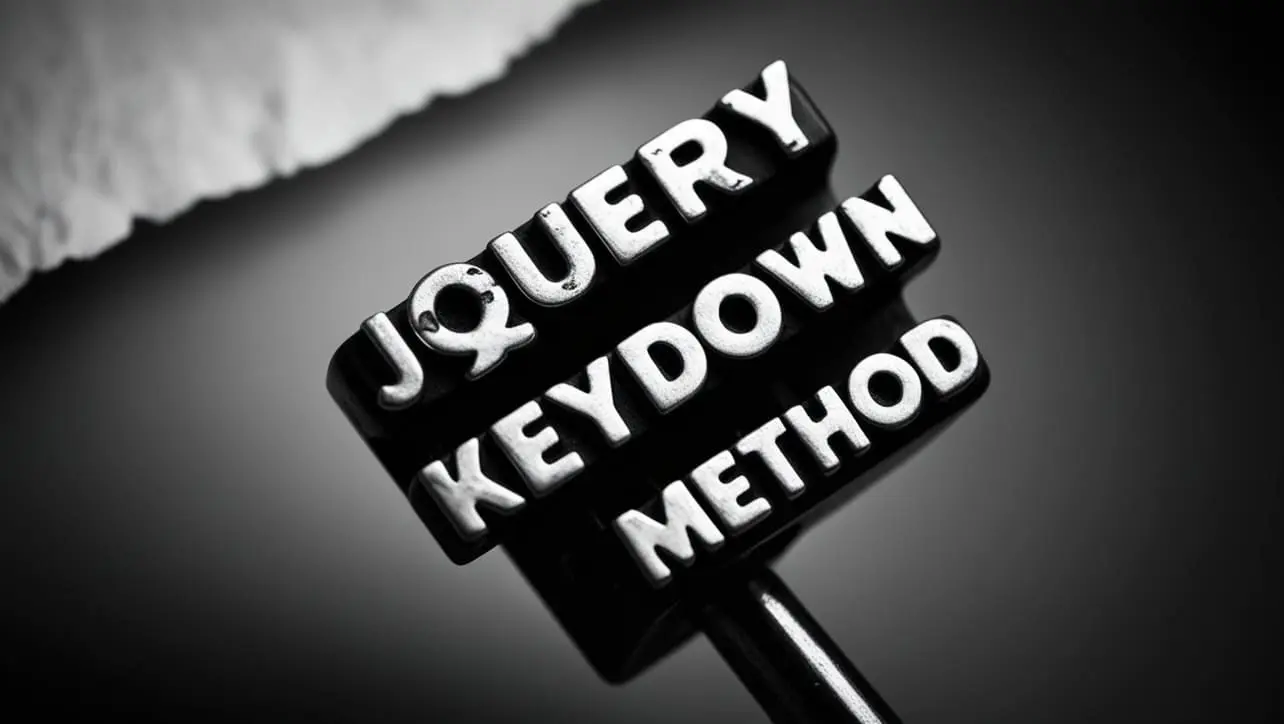
jQuery Topics
- jQuery Introduction
- jQuery Callbacks
- jQuery deferred
- jQuery selectors
- jQuery Ajax Events
- jQuery Ajax Methods
- jQuery Keyboard Events
- jQuery Keyboard Methods
- jQuery Form Events
- jQuery Form Methods
- jQuery Mouse Events
- jQuery Mouse Methods
- jQuery Event Properties
- jQuery Event Methods
- jQuery HTML
- jQuery CSS
- jQuery Fading
- jQuery Traversing
- jQuery Utilities
- jQuery Properties
jQuery .keydown() Method

Photo Credit to CodeToFun
🙋 Introduction
In web development, user interaction plays a crucial role in creating engaging and dynamic experiences. jQuery offers a wide range of methods to handle user input events, and one such method is .keydown(). This method allows you to capture keyboard keypress events and execute JavaScript code in response. Understanding and utilizing the .keydown() method effectively can significantly enhance your ability to create interactive web applications.
In this guide, we'll explore the .keydown() method in detail with practical examples to help you harness its power.
🧠 Understanding .keydown() Method
The .keydown() method in jQuery is used to bind an event handler to the "keydown" JavaScript event. This event occurs when a key on the keyboard is pressed down. It provides a way to capture user input in real-time and trigger actions accordingly.
💡 Syntax
The syntax for the .keydown() method is straightforward:
$(selector).keydown(handler)📝 Example
Basic Usage:
Let's start with a simple example where we display an alert message when a key is pressed:
index.htmlCopied<!DOCTYPE html> <html lang="en"> <head> <meta charset="UTF-8"> <title>jQuery.keydown()Method Example</title> <script src="https://code.jquery.com/jquery-3.6.0.min.js"></script> <script> $(document).ready(function(){ $(document).keydown(function(event){ alert('Key pressed! Key code: ' + event.keyCode); }); }); </script> </head> <body> <!-- Your content here --> </body> </html>In this example, every time a key is pressed on the keyboard, an alert dialog will pop up displaying the keycode of the pressed key.
Detecting Specific Keys:
You can also use the
.keydown()method to detect specific keys and perform actions accordingly. Let's log a message to the console when the Enter key (keycode 13) is pressed:example.jsCopied$(document).keydown(function(event){ if(event.keyCode === 13) { console.log('Enter key pressed!'); } });Preventing Default Action:
You can prevent the default action associated with a keypress event using the
.keydown()method. For example, let's prevent the default action of the Enter key:example.jsCopied$(document).keydown(function(event){ if(event.keyCode === 13) { event.preventDefault(); } });This will prevent the default form submission behavior when the Enter key is pressed.
Combining with Other Methods:
The
.keydown()method can be combined with other jQuery methods and selectors to create more complex interactions. For example, you can use it in combination with .val() to capture input from form fields in real-time.
🎉 Conclusion
The jQuery .keydown() method provides a powerful way to capture keyboard input and create dynamic user experiences. Whether you need to detect specific keys, prevent default actions, or create complex interactions, this method offers the flexibility and control you need.
By mastering its usage and combining it with other jQuery methods, you can take your web development skills to the next level and create engaging applications that respond seamlessly to user input.
👨💻 Join our Community:
Author

For over eight years, I worked as a full-stack web developer. Now, I have chosen my profession as a full-time blogger at codetofun.com.
Buy me a coffee to make codetofun.com free for everyone.
Buy me a Coffee












If you have any doubts regarding this article (jQuery .keydown() Method), please comment here. I will help you immediately.